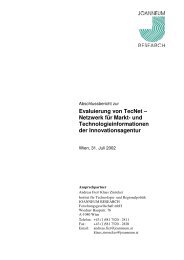roadMAP [PDF, 1.9 MB] - fteval
roadMAP [PDF, 1.9 MB] - fteval
roadMAP [PDF, 1.9 MB] - fteval
Create successful ePaper yourself
Turn your PDF publications into a flip-book with our unique Google optimized e-Paper software.
In general all investigated MAPs include, as mentioned above, a variety of stakeholders in the<br />
design process, mostly in the form of expert groups/workshops. Some countries confronted<br />
these experts with detailed policy papers how the programme shall look like (AT, HU, SL), one<br />
country (IE) published the draft programme as basis for a written consultative process on the<br />
internet.<br />
A general feature is that all design processes (initiated by ministries or agencies) carry out<br />
consultative processes with a number of different actors, like policy consultants or<br />
representatives from science and industry. An Advisory Research Council in form of a strategic<br />
governmental advisory board, which doesn’t exist in all countries, was involved in the design<br />
just in two cases out of 16 (EE and CA).<br />
A specific feature can be observed for so-called “thematic MAPs” as the involvement of<br />
additional actors very much depends on the subject covered by the respective MAP. E.g. UK’s<br />
construction programme PII involved construction industry; Ireland’s Energy RDD involved<br />
building developers, local authorities, energy agencies in the design process to ensure right<br />
from the beginning that results in these special sectors will be useful and taken up by the users.<br />
Just AT, HU, EE reported about an efficient and fast design process where roles of the various<br />
stakeholders were clear which is considered as good practice. On the contrary the German<br />
MAP was developed through a very long and exhaustive design process, which included all<br />
relevant actors in the field.<br />
4.3.3 “And the dominant public actor is: ….”<br />
As the MAP-TN and StarMAP showed for the majority of MAPs investigated the ministries take<br />
the lead in the design process. An exception is SE where the former agency NUTEK (now<br />
VINNOVA) has set up the Competence Centre programme. This has to do with the Swedish<br />
system in general with their strong role for the agencies and their lean ministries. A similar<br />
example is FI with TEKES’ Technology Programmes and the thematic MAP in IE, where the<br />
relevant agency Sustainable Energy Authority of Ireland, the former Irish Energy Centre, has<br />
had a very strong design role. A distinct approach was followed by AU (see details below) and<br />
CA: These countries started the programme design with a political announcement during<br />
elections.<br />
<strong>roadMAP</strong> 23


![roadMAP [PDF, 1.9 MB] - fteval](https://img.yumpu.com/21079876/28/500x640/roadmap-pdf-19-mb-fteval.jpg)

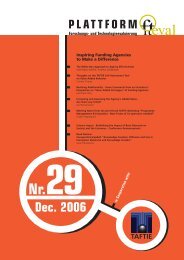
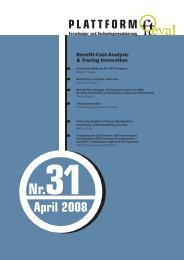
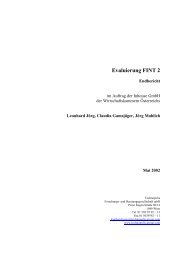
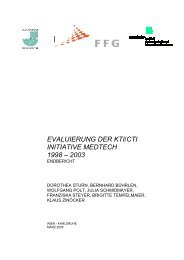
![GuggenbergeronBoku [PDF, 73.4 KB] - fteval](https://img.yumpu.com/21024081/1/184x260/guggenbergeronboku-pdf-734-kb-fteval.jpg?quality=85)
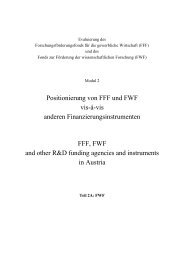

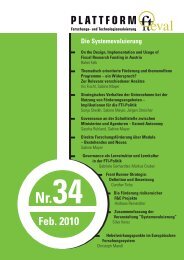
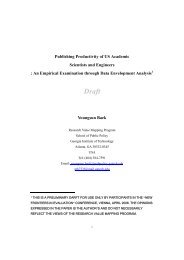
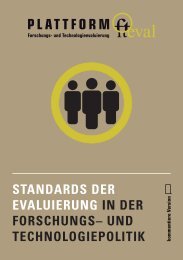
![ITF_Energietechnik [PDF, 39.6 KB] - fteval](https://img.yumpu.com/20959076/1/184x260/itf-energietechnik-pdf-396-kb-fteval.jpg?quality=85)
![Evaluation Standards [PDF, 120.8 KB] - fteval](https://img.yumpu.com/20931509/1/184x260/evaluation-standards-pdf-1208-kb-fteval.jpg?quality=85)
